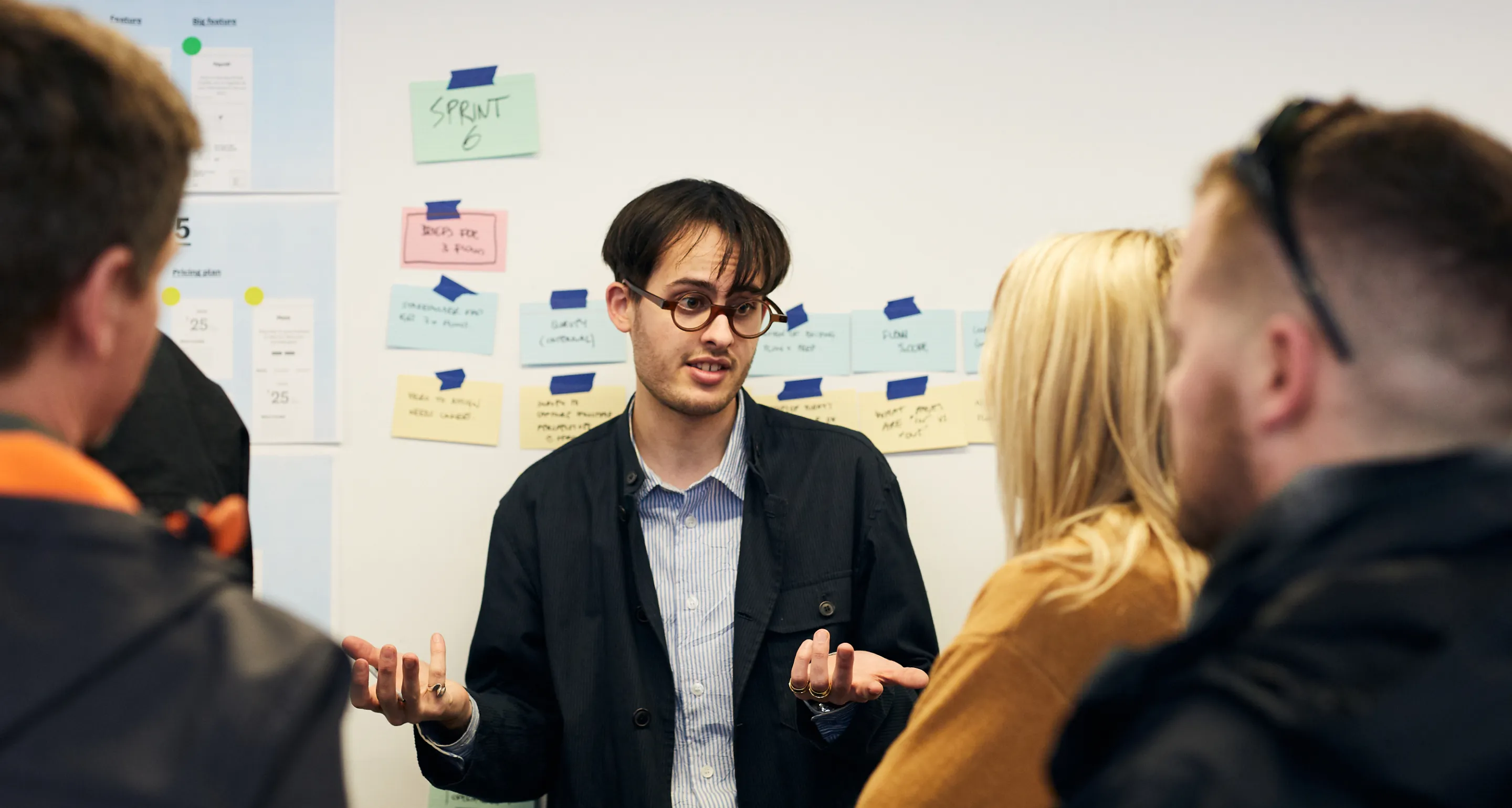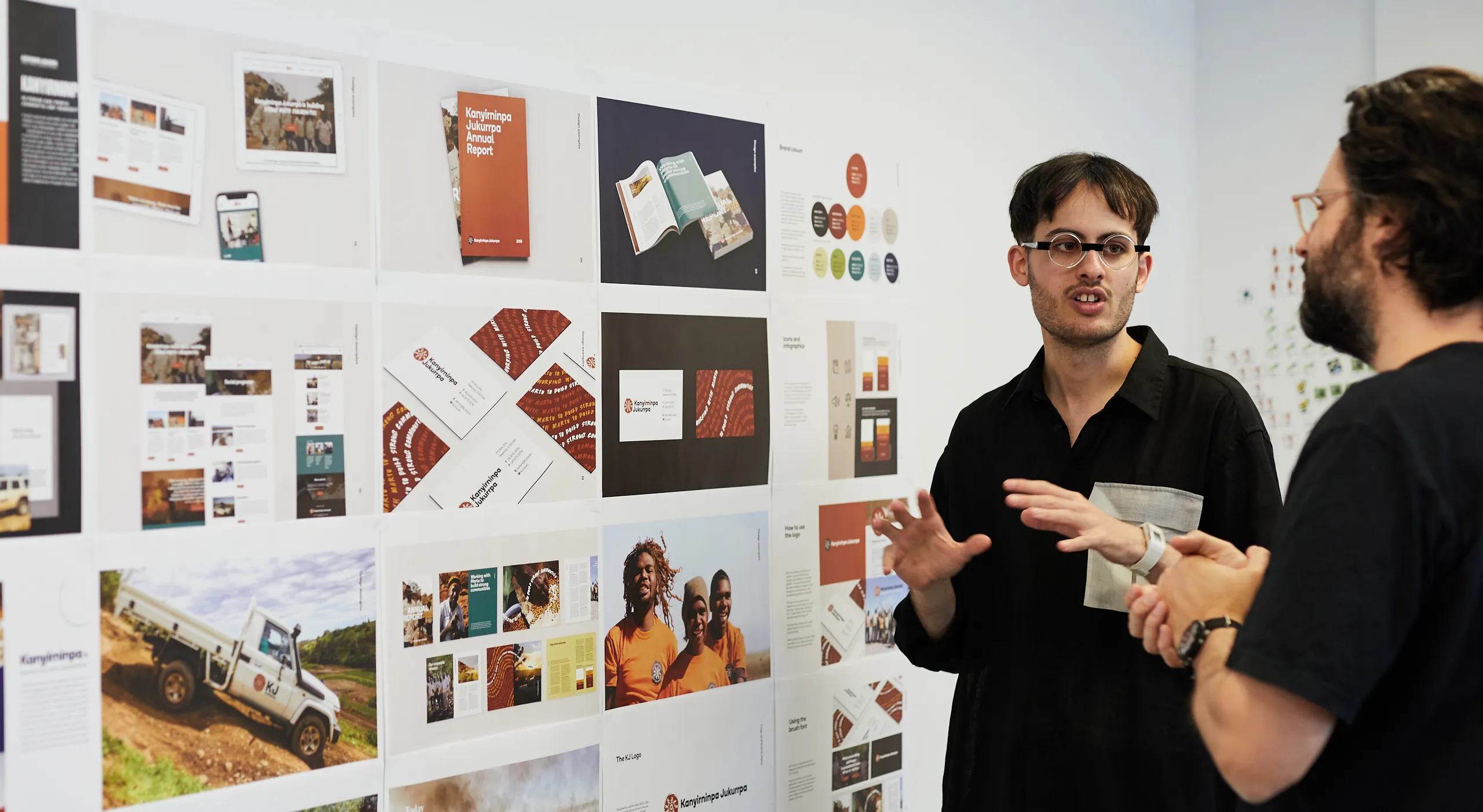By Jacob Zinman-Jeanes , Design Director
In 2019, we worked with Xero on a redesign of their website . To help them have easier internal conversations about user needs, design decisions and content structure, we introduced a framework called ‘N.I.S.R’. We’ve been using this same way of thinking about design internally at Today.
So, what is NISR and how does it help? I wrote this article for Optimal Workshop’s CRUX magazine, introducing the basics of the framework.

A unifying framework for experience design that will help you make more friends
The best work happens when you open your design process up and invite everyone in. But how do you make your process accessible? Everyone has their own way of thinking about design, especially those without 'designer' or UX' in their job description. Even two seasoned UX professionals will use different methods. They know the double diamond; they've used Object-Oriented UX; they map interaction flows; make journey maps, personas and behavioural archetypes; they like atomic design systems or practice content-first design.
Good design needs good collaboration, but collaboration gets harder when you introduce more people into the mix—more opinions, more methods, more money: more problems. But, if you can agree on the type of problem you're solving, you can use whatever processes you want, confident that you and your collaborators, stakeholders and clients are aligned on where you're headed. And let me tell you, you're headed toward true friendship built on the bedrock of team alignment.
Good design needs good collaboration, but collaboration gets harder when you introduce more people into the mix—more opinions, more methods, more money: more problems.
There are only four types of problems in experience design
- Need problems: who our target audiences are, their motivations, mindsets and the tasks we help them complete.
- Information problems: the information, data and knowledge we give our audiences that meets their needs.
- Structure problems: the wording, hierarchy and layout of our information; and how users find it.
- Representation problems: the visual, tactile or auditory qualities of our interface signifying how users can interact with it; and the look, feel and tone of voice that engages them.
When you understand what users need, you can decide what information to show them, in what structure, using which representation. A great experience is the sum of these parts: engaging, well-structured information that meets genuine needs.
If you don't know what type of problem you're solving, you will inevitably solve it wrong. You're spending time whittling away at button corner radiuses to improve conversion when the wrong people are coming to your website. You're trying to solve a need problem with a representational solution—and it won't work.
Better design by committee
How do you turn a group of enemies people who are convinced that round buttons convert better into a circle of friends who, all holding hands, agree that you need to step back and do discovery research?
Here are three things you can try to get everyone to agree.
1. Classify the problem
Bad design by committee happens when everyone is solving a different problem. Those less familiar with the intricacies of design can be trapped into thinking that changes to representation and structure will solve all ills. You might know that the real problem is about information or need, but you want to get everyone else on the same page.
Simply introducing this terminology into the conversation is a powerful tool to get agreement.
Imagine you and your collaborators are working on a landing page. Some believe that changing the button colour will improve clickthrough. Help them understand that this is a representational solution. Others think a structural change is needed, like moving the button up the page or rewriting a paragraph into bulleted proof points. You think the information on the page doesn't give users enough confidence in the product we're selling. But, hey, maybe you're targeting the wrong audience segment and should understand their needs first.
2. Forget methods and focus on outcomes
It's an uphill battle convincing someone to let you make a few personas when they believe better conversion lies in rounder buttons. Getting them on-board with a new method means explaining not only what the method is, but how it works and that it's better than what they're proposing.
People hold on to methods like life rafts in the sea of problem solving, but methods are a means to an end: a tool to achieve an outcome. If you get someone on board with the outcome, you can use any method you want.
Personas remind us who we're designing for, but in themselves don't provide a deep understanding of users—they're documents capturing that knowledge. Your task isn't 'convince everyone we need personas', your task is 'convince them we don't know enough about what our users need'.
3. Trojan horse prototypes
It's hard to argue with evidence from user research. Prototypes can be trojan horses: take a mockup with different button colours into testing but use it to mediate discussions on a participant's mindset and motivations.
If you consider prototypes a way to answer questions rather than as solutions that need validation, every moment of user engagement becomes an opportunity to build a body of evidence across need, information, structure, and representation. A body of evidence you can use to sway arguments.
So, turn ideas into questions using hypotheses. Ask your collaborators and stakeholders to frame their solutions as hypotheses. "If we make our button green, it will stand out more, leading to greater clickthrough" (a representation solution) or "If we show people how our new product works rather than telling them, they'll be more likely to sign up for a trial" (an informational solution). From there you can create a prototype that will help you answer the right questions.


Friends speak each other's language
Good collaboration is the lifeblood of good design, but without good communication, our collab is dead on arrival.
The four types of experience design problems—Need, Information, Structure and Representation—give you and your collaborators a common language that all other tools and methods fit within. A framework that refocusses everyone's work toward outcomes: a better understanding of our users, the right information for the right needs, an easy to understand structure and an engaging presentation.
In the words of me, not too many paragraphs ago: if you understand the outcome you're looking for, you can use any method to get there.
Good collaboration is the lifeblood of good design, but without good communication, our collab is dead on arrival.